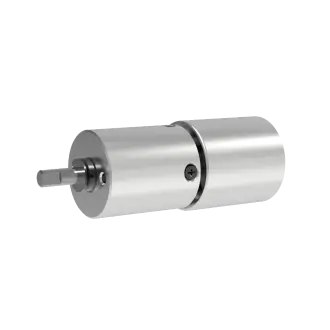Servo motors are the unsung heroes of the maker world. Compact, precise, and surprisingly powerful, these little devices turn abstract code into tangible motion—making them perfect for Arduino-based projects. Whether you’re a tinkerer looking to automate your desk lamp or an educator teaching robotics fundamentals, servo motors offer endless possibilities. Let’s dive into five projects that showcase their versatility, starting with simple experiments and building toward intermediate challenges.

1. The Humble Sweeper: Your First Servo Circuit
Every journey begins with a single step—or in this case, a 180-degree sweep. Connect a basic servo (like the SG90) to your Arduino Uno. With just three wires (power, ground, signal), upload a sketch to make the servo swing back and forth. This project isn’t flashy, but it teaches pulse-width modulation (PWM), the language servos understand. Pro tip: Use a potentiometer to manually control the angle and see how analog inputs translate to motion.
2. “Wave Hello” Robotic Arm
Take your servo skills 3D by building a cardboard or 3D-printed robotic arm. Two servos can create a basic two-axis movement: one for the base rotation and another for the gripper. Load a pre-programmed sequence to make it wave, pick up lightweight objects, or even play a mini game of catch. This project introduces mechanical design basics and the importance of torque (hint: gear ratios matter).
3. Automated Plant Watering System
Combine a moisture sensor, water pump, and servo motor to create a self-sufficient plant caretaker. The servo acts as a valve controller, opening when soil dryness hits a threshold. It’s a practical introduction to sensor integration and conditional logic. Bonus points for adding an LCD display that reads, “Your cactus is judging you.”
4. Solar Tracker for Maximum Efficiency
Harness the sun’s power with a dual-axis solar tracker. Two servos tilt and rotate a solar panel based on light sensor data. This project blends environmental tech with servo precision, and it’s scalable—imagine a backyard array that follows the sun like a sunflower.
5. Interactive “Mood Lamp”
Why settle for static lighting? Use a servo to rotate colored filters or diffusers in front of an LED strip. Program patterns that respond to sound, temperature, or even Twitter trends (thanks to API integrations). It’s a gateway to exploring how motion can enhance ambient environments.
Why These Projects Work Servos thrive in low-speed, high-precision scenarios. Their built-in feedback loops make them ideal for closed-loop systems, unlike regular DC motors. With Arduino’s simplicity, you’re not just moving parts—you’re creating systems that interact with the world.
Ready to level up? These next five projects push servo motors to their limits, integrating advanced sensors, IoT capabilities, and even artistic flair.
6. Gesture-Controlled Robotic Hand
Build a robotic hand that mirrors your movements using flex sensors or a glove with accelerometers. Each finger joint pairs with a micro servo, translating your gestures into precise motions. It’s a crash course in biomimicry and real-time data processing.
7. CNC Mini Plotter
Transform two servos and a pen into a desktop drawing machine. By converting G-code (or simple XY coordinates), you can plot geometric designs or scribble messages. This project reveals the hidden math behind smooth motion—think of it as reverse-engineering a printer.
8. Smart Blind Opener
Tired of morning glare? Install servos on window blinds, synced to a light sensor or smartphone app. Add a stepper motor for height adjustment and a servo for tilt control. Suddenly, your room wakes up with you.
9. Balancing “Stormtrooper” Robot
Challenge yourself with a self-balancing robot using an MPU-6050 gyroscope and continuous rotation servos. It’s a PID control loop nightmare (or masterpiece), perfect for understanding feedback systems. Dress it as a Star Wars droid for extra maker cred.
10. Kinetic Wall Art
Merge engineering and aesthetics by designing a servo-driven sculpture. Use multiple servos to rotate geometric shapes, creating shifting shadows and patterns. Pair it with a microphone to make the art “dance” to music—a conversation starter for any room.
Beyond the Breadboard Servos aren’t just for prototypes. Consider these real-world twists:
IoT Integration: Use ESP8266 modules to control servos via Wi-Fi. Imagine adjusting your motorized curtains from bed. Force Feedback: Experiment with load sensors to create servos that “resist” when pushed, adding realism to simulators. Swarm Robotics: Synchronize dozens of micro servos for mesmerizing group behaviors, like a mechanical flock of birds.
Final Spark The beauty of Arduino and servos lies in their adaptability. A component meant for RC planes can become part of a smart home, an art installation, or even a assistive device. Your next project might start as a sketch on a napkin—but with servos, it could end up in motion. So, what’s stopping you? Grab that motor, write a few lines of code, and let physics do the rest.





































